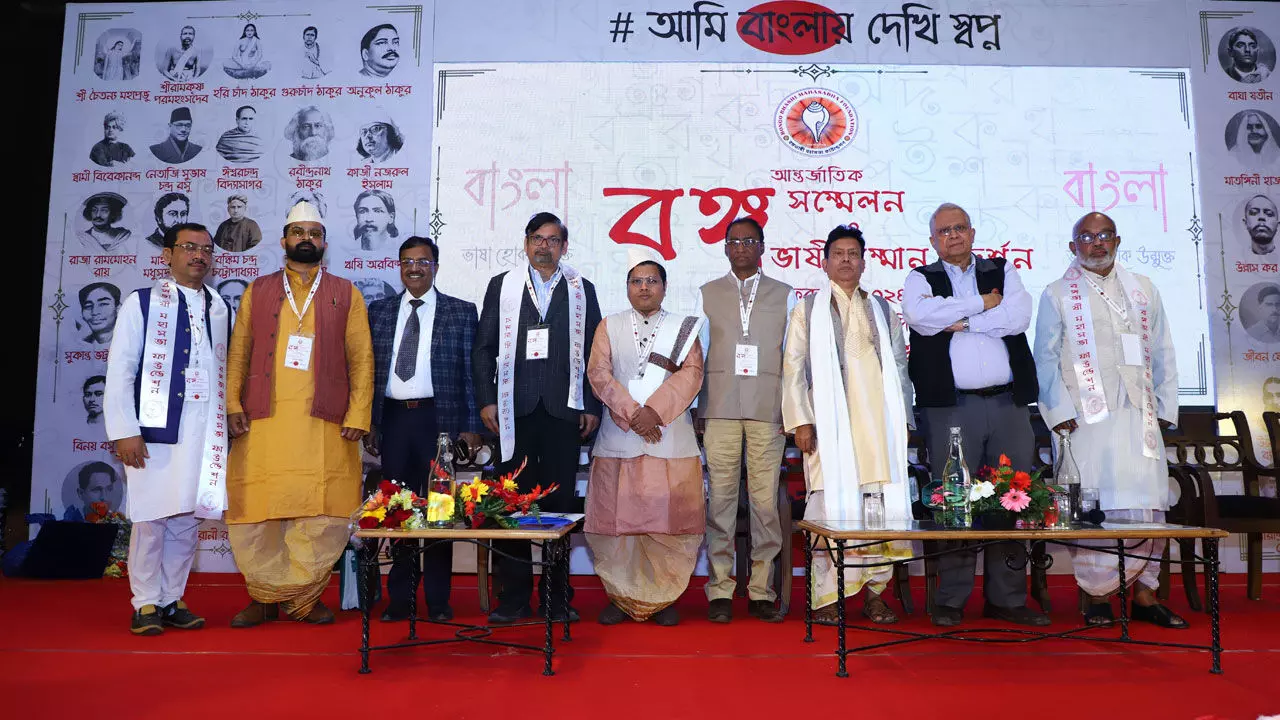Bengali, Assamese, Marathi, Prakrit, Pali Granted Classical Language Status
This historic recognition comes after continuous advocacy by BBMF, a leading cultural organisation that has been at the forefront of the campaign to secure this prestigious status for Bengali since 2018
Bengali, Assamese, Marathi, Prakrit, Pali Granted Classical Language Status

Led by Founder Dr Shubhro Chakrabartty and president Dr Parimal Kanti Mondal, the BBMF has worked tirelessly to bring attention to Bengali’s ancient literary and cultural heritage. The foundation’s efforts have now been rewarded, with the government officially recognizing Bengali alongside other classical languages like Sanskrit, Tamil, and Kannada
In a landmark decision, the Union Cabinet has granted Classical Language status to five more Indian languages: Bengali, Assamese, Marathi, Pali, and Prakrit. This historic recognition comes after continuous advocacy by the Bongo Bhashi Mahasabha Foundation (BBMF), a leading cultural organisation that has been at the forefront of the campaign to secure this prestigious status for Bengali since 2018.
Led by Founder Dr Shubhro Chakrabartty and president Dr Parimal Kanti Mondal, the BBMF has worked tirelessly to bring attention to Bengali’s ancient literary and cultural heritage. The foundation’s efforts have now been rewarded, with the government officially recognizing Bengali alongside other classical languages like Sanskrit, Tamil, and Kannada. The recognition of Assamese, Marathi, Pali, and Prakrit further showcases the government’s dedication to preserving India's linguistic diversity. The BBMF has long argued that Bengali, spoken by over 250 million people worldwide, meets all the government’s criteria for classical language recognition, including having ancient origins, a vast and diverse literary tradition, and a unique cultural identity. Bengali’s rich literary history, dating back over a millennium, includes luminaries such as Nobel laureate Rabindranath Tagore and revolutionary poet Kazi Nazrul Islam, whose works have profoundly influenced Indian thought and culture.
The foundation also emphasized the practical benefits of the new status.
Talking to Bizz Buzz, Dr Mondal said, “Recognition as a classical language will open doors to increased funding for research, education, and preservation initiatives, ensuring that Bengali continues to thrive for generations to come”.
“This recognition is more than just symbolic—it’s a celebration of the incredible literary, artistic, and cultural contributions made by Bengali speakers,” said Dr Chakrabartty, adding, “Bengali has been at the heart of India’s cultural renaissance and freedom struggle, and this recognition reaffirms its rightful place in India’s linguistic history.”
The Bongo Bhashi Mahasabha Foundation (BBMF) had hosted an International Bengali Conference and Awards Ceremony at the Vishwa Yuvak Kendra in New Delhi on February 24, and it is because of their efforts that the Bengali language has today been recognized as a classical language by the Government of India. The event brought together prominent figures from the Bengali-speaking community and beyond, celebrating achievements in various fields including literature, cinema, journalism, and social service. It also served as a global platform to honour the foundation’s successful campaign to elevate Bengali to classical language status.
“This recognition is a proud moment for all of us,” said Dr Mondal. “It validates years of effort and is an investment in the future of the language. Bengali has shaped modern India in profound ways, and now its legacy is officially recognized.”
The inclusion of Assamese, Marathi, Pali, and Prakrit in the prestigious list of classical languages is also seen as a significant achievement, acknowledging their ancient origins, literary richness, and contributions to India’s cultural landscape. With this latest addition, the total number of classical languages in India now stands at eleven, further cementing the country’s status as a land of linguistic and cultural diversity.

